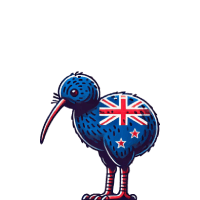The exact appearance of parasitoid wasps depends on the species. Most are extremely small (1 to 10 mm) and have brown or black bodies with long, thin antennae. However, some species belonging to the family Ichneumonidae can be over 10 cm (4 inches) long and have a very long ovipositor…
Featured Post
Taxonomy and Species Diversity
Taxonomy of the Parasitoid wasps of New Zealand
New Zealand, known for its unique biodiversity, is home to many endemic species, including parasitoid wasps. These insects play a…
Variety of wasps
Parasitoid wasps seem to be more diverse than expected. Beetles have long been the “official” insect order with the largest…
Predators and parasites
To most people, parasitic wasps are invisible. Their life cycle is quite remarkable, but they remain almost unknown outside the…
Evolutionary Adaptations of Parasitoid wasps of New Zealand
New Zealand, with its unique flora and fauna, is an interesting site for studying evolutionary processes occurring in isolated ecosystems.…
Blog
How Parasitoid Wasps Impact Ecological Balances
Parasitoid wasps play a crucial role in maintaining ecological balance in natural ecosystems. Their unique lifestyle of parasitizing other insects makes them key players in complex food chains and natural […]
Read MoreEcological Importance of Parasitoid Wasps in New Zealand Forest and Agricultural Ecosystems
Parasitoid wasps play a key role in New Zealand ecosystems, particularly in forested and agricultural areas. These insects perform important functions in the natural regulation of insect pests, contributing to […]
Read MoreParasitoid Wasps and Biological Control
Biological pest control is an important strategy in agriculture and environmental protection to keep pest populations at acceptable levels with minimal use of chemical pesticides. One of the key components […]
Read MoreEvolutionary Adaptations of Parasitoid wasps of New Zealand
New Zealand, with its unique flora and fauna, is an interesting site for studying evolutionary processes occurring in isolated ecosystems. Among the many species that have adapted to local conditions, […]
Read More






